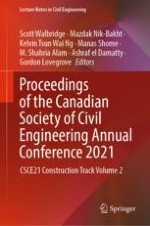2023 | OriginalPaper | Buchkapitel
A Faceted Classification System for Innovation in the Construction Industry
verfasst von : Claire Delarue, Érik A. Poirier, Daniel Forgues
Erschienen in: Proceedings of the Canadian Society of Civil Engineering Annual Conference 2021
Verlag: Springer Nature Singapore
Aktivieren Sie unsere intelligente Suche, um passende Fachinhalte oder Patente zu finden.
Wählen Sie Textabschnitte aus um mit Künstlicher Intelligenz passenden Patente zu finden. powered by
Markieren Sie Textabschnitte, um KI-gestützt weitere passende Inhalte zu finden. powered by
